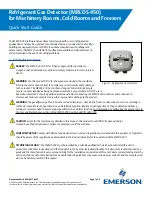
Page 30
The Minelab SD2200v2
7.6.1 Digging Deep Targets
The
SD2200v2
has unparalleled depth capabilities which will surprise
experienced and new prospectors alike. If the target appears to be buried
deeply, it will help to use the following technique:
·
Use the cross-sweeping method to locate the target as accurately
as you can. Scrape a hole about 100mm deep and large enough to
take the coil. Keep testing the target location as you dig deeper and
deeper. Be careful that the target is not in the wall of the hole and
you dig past it.
·
If using a Monoloop coil, turn the detector coil onto its edge, making
it vertical, and probe various sections of the hole, listening for the
loudest reading.
7.7
Salty Environments
The
SD2200v2
will find objects at great depth in salty environments, but
interfering signals caused by the saturated salt or highly concentrated salt
can not be completely balanced out. The 11 Double D coil will give the
best results in salty conditions. Again, only searching in
Channel 1
may
help to keep the detector stable.
Instruction Manual
Page 31
8.
Maintenance
The
SD2200v2
is a high quality electronic instrument. It is finely engineered
and housed in a durable container. Take care of it in the following way:
·
It is
vitally important to keep the connectors dry and clean.
·
Do not expose the detector to high temperatures or leave in the sun
longer than necessary. Shading will help protect it. Avoid leaving it in
a closed vehicle, especially in the sun.
·
The coil housing will wear through if you scrub the ground with it
while searching. Minelab recommends that you use a replaceable
skid plate on the coils to protect them.
·
To prevent dirt entering between the coil and skidplate, you can use
a silk tape such as Leukosilk
®
, which is available from chemists.
The use of some other tapes, such as insulation tape, can result in
loss of performance.
·
The control box is not waterproof, even though it has been designed
to be water-resistant. Avoid getting it wet.
·
The coils are not waterproof. They are water resistant and may be
used in rain or wet conditions. Do not immerse in water.
·
The control box and Coils must not come into contact with petrol or
other oil-based liquids.
·
If any part of the detector comes into contact with corrosive
substances, including salt or salt water, it must be washed with
fresh water. Keep the unit dry and clean. To clean the detector use a
damp cloth with mild soap detergent.
DO NOT
use solvents.






































